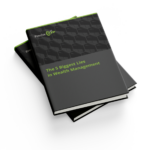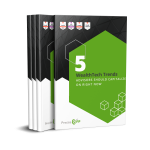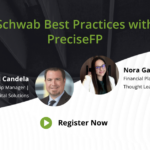Ever noticed how things change drastically in technology? It’s like when we upgraded from dial-up internet to lightning-fast Wi-Fi, but instead, it’s an upgrade in financial advisor operations. However, adjusting to these changes isn’t a walk in the park for many companies.
Here’s the deal: New tech can throw off how things used to run smoothly for employees. So, getting everyone on board, explaining the new plans clearly, and doing it at the right speed are super important in the world of financial advising.
So, what is the best way to add new software to your office? Let’s investigate the concept of change management. Change management is like having a step-by-step plan to switch things up in a company, whether it’s goals, ways of doing stuff, or using new tech.
In this blog, we’ll cover best practices to get started with new software. We’ll look at three big areas: talking about it with everyone, teaching them how it works, and making sure everyone’s actually using it.
1) Get Buy-In from Your Office
Contrary to conventional organizational wisdom when switching to a new technology, you actually can over communicate about adopting a new technology or approach. Employees don’t need repetitive, outbound communication to buy into an organization-wide change — they need to feel heard and understood.
Rather, change management is more successful when leaders listen more, talk less, and use a communication strategy that is more focused on addressing employee and stakeholder needs and concerns than repeatedly touting the benefits of the proposed change.
According to Gartner research, involving employees in decision-making is crucial to more successful adoption of organization-wide change (such as adopting new wealthtech). Just involving employees in decision-making can increase success by 15%. Similarly, having regular conversations with employees about the change where they can raise questions and concerns increases success by 32%. The bottom line? When people feel part of a change, they are more committed to it.
2) Plan for Training and Skill Development
When considering adopting new wealthtech, managers and leaders must recognize that applying a new technology to their day-to-day work can be daunting for employees. Even though adoption will save them time in the long run, employees will likely resist change until they feel up to speed and comfortable using a new technology or tool.
With that in mind, successful change management for wealthtech adoption relies heavily on preparing employees with the right resources and training to implement the technology successfully. This should start before a new technology is even purchased. For example, some questions leadership should consider include:
- How do I identify the skills and capabilities my employees will need to be successful with this new technology?
- How can I create a culture of lifelong learning where reskilling and upskilling is a welcome and expected aspect within the company (by employees and leaders alike)?
- What resources does my technology provider have available at my disposal to train and upskill employees?
- Does training cost money?
- What is the learning curve for typical users?
Training and upskilling your employees helps with wealthtech change management and creates an environment where top talent is more likely to stick around.
3) Adopt Technology at the Right Speed for Your Organization
Lastly, an important aspect of wealthtech change management is not moving faster than you (and your employees) are capable of. While it’s true that many emerging technologies have the potential to save your organization time and money, moving too fast can result in redundant processes and confused employees.
Rather, consider taking a phased approach to adopting new wealthtech. For example, you could set up innovation labs or sandbox trials where your team could develop, test, and implement exciting new technologies. That’s not to say you can’t move fast, but you should move with a strategic focus according to your resources and goals.
Ultimately, successful wealthtech change management comes down to taking a wider, strategic view of things. By communicating with employees with a listen-first approach, training adopters fully and early, and adopting new technologies in phases, you can ensure your new wealthtech will do what you intended it to — make a positive impact on your organization and your bottom line.
We get it, trying out new tech can feel overwhelming. That’s why we want to highlight how easy it is to begin using PreciseFP. Our customer service is award-winning and responds in just 7 seconds, so you’re in capable hands. Plus, everything is set up and made by advisors, for advisors who understand your needs. A hassle-free experience right from the start. Want to make your work smoother? Give our free trial a go at PreciseFP.com.










